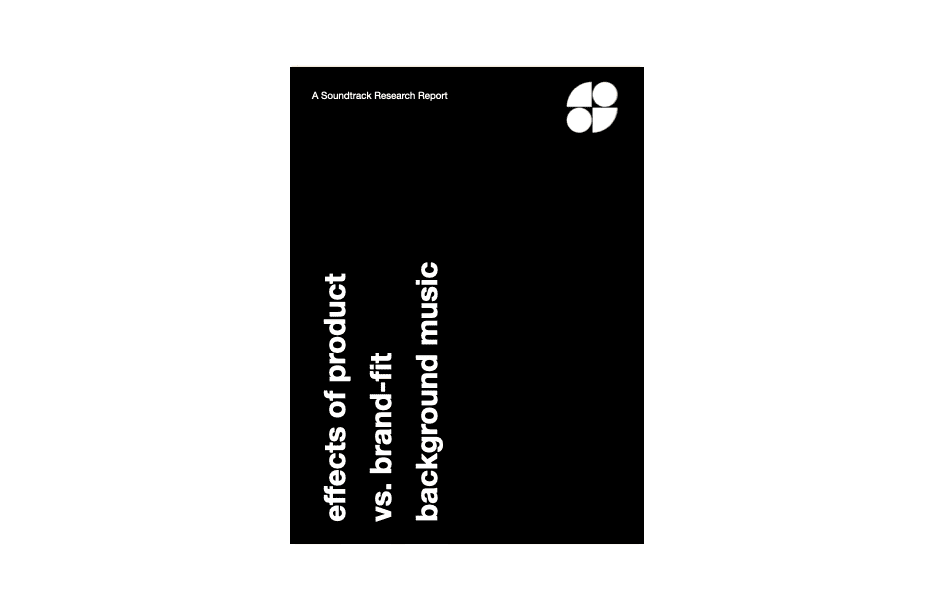Hästens: Effects Of Product-Fit Vs. Brand-Fit Music

Type of research and hypothesis:
An in-store music study on how Product-fit vs. Brand-fit background music affects sales, the store staff’s environment, and the customer’s brand perception.
Method:
We conducted an extensive field experiment in five of Hästens’ stores in New York. Hästens is a retail showroom that sells premium beds, bed linen, pillows, duvets, and accessories.
The following three music interventions were studied:
(a) Brand-fit. A playlist developed by Soundtrack Your Brand where the music reflected values such as “exclusivity”, “calm”, “modern” and “down to earth”.
(b) Product-fit. A playlist produced by Soundtrack Your Brand where the music was based on a sleep playlist that was available among private individuals on Spotify, i.e. music that is associated with sleep/bed.
(c) No-fit popular music. Contained popular music that was neither brand-specific (a) nor product-specific (b).
KPIs:
We studied the following five different outcome variables per day:
• The number of sales quotes
• The sales value of the sales offers
• The number of sales orders
• The sales value of the sales orders
• Conversion rate, i.e. the proportion of quotations that become a sales order
Results:
Our study showed that:
a) music has a great effect on the staff’s perceived work environment,
b) customers perceived the brand as less luxurious when no-fit music was played,
c) music has no effect on direct sales of high-risk and high-engagement product purchases.
In the in-depth interviews with the store staff, it emerged that the choice of music was very important for their working environment. One of the respondents commented on the song choices in the playlists as follows:
“When the bad ones are on, it really affects me because it’s disturbing my workflow. It’s not inspiring or putting me in a good mood. This kind of music (No-fit) puts me in a good mood.”
Another store staff pointed out that:
“When it’s that kind of particular playlist (Brand-fit), it’s very irritating to hear, but when the music is great and well-known (No-fit) it makes you feel more upbeat, and you plow through your work.”
In general, the store staff was more positive about radio music (No-fit), i.e. the music that contained popular songs that were not Brand-fit. We analyze it as music has a different effect on store staff depending on what task is performed:
Situation 1: no customer interaction, monotone tasks, low cognitive involvement. Then recognizable and upbeat music is recommended. The store staff sings along, and it showed that this kind of music stimulates them and gives them energy.
Situation 2: the customer is in the store, with high focus, high engagement, and high information exchange. Then the music recommendation is more soothing, non-upbeat and non-lyric music in order to not distract the communication between the store staff or the customers.
Since customer flow in the showroom was very low in general, Situation 1 was most frequently occurring. Therefore, Brand-fit music and the white noise part of Product-fit were very disliked as it was unfamiliar, calm, and low in energy. For example, one of the respondents said the following about this playlist:
“When we have this particular playlist (Brand-fit), everybody is like, oh God we are going to have to listen to this a whole month. Shoot me. Literally. ”
During the ten test months, the three different playlists were randomly released into the five experiment stores each day, that is, randomness determined which of the three playlists would be played in the store during the day. This means that we could study the sales effects of the music interventions by comparing how sales differed during the three different music interventions. The total number of observations was 1,476, which corresponds to the total number of days during the experimental period when the five stores were open.
The sales results showed that none of the playlists had a significant effect on the 5% level (value <0.05) on the studied outcome variables, which shows that the music choices in the experiment did not have a statistically significant effect on sales in Hästens stores in New York. However, the results showed an indication that the sales value increases when the stores play the brand-fit playlist, but this result is significant exactly at the 10% level (p-value = 0.093).
There were also no statistical differences in the sales of playing product-fit or brand-fit music in the store. The overall conclusion of the experiment is thus that the background music has no effect on sales. The customer interview results showed that the customers perceived the brand as luxury and expensive when Brand-fit and Product-fit music interventions were playing, and the opposite when No-fit music was playing.
Respondents exposed to the No-fit music playlist also had a less positive image of the staff, a highly negative focus on the price but a more positive image of trying the beds and the products – a more functional perception. However, respondents exposed to Brand-fit and Product-fit valued the staff service highly and had a positive focus on the decor and atmosphere of the store.
Conclusion:
The conclusion of the experiment is thus that the background music had: A great effect on the staff’s perceived work environment. Therefore, it is very important to walk the space and understand the kind of task performed during the day, the customer flow, and what kind of products are sold, high vs. low engagement and risk products. Also, important to communicate the music strategy with the store staff. No direct effect on sales.
A showroom is different from a typical commercial store, and buying an expensive bed which is a high-risk and high-engagement purchase is not a spontaneous purchase behavior connected to instant sales. Instead, this kind of purchase requires a profound amount of reflection time, and consideration to get the purchase right. High-risk and high-engagement products are rare purchase situations, and the customers don’t want to get it wrong. However, the results showed that music has a strong effect on the customer brand perception, the wrong music strategy tells the wrong brand story and in this case, the brand is being perceived as less luxury or not luxurious at all.
Our study shows that music is super important to build the right brand perception.
